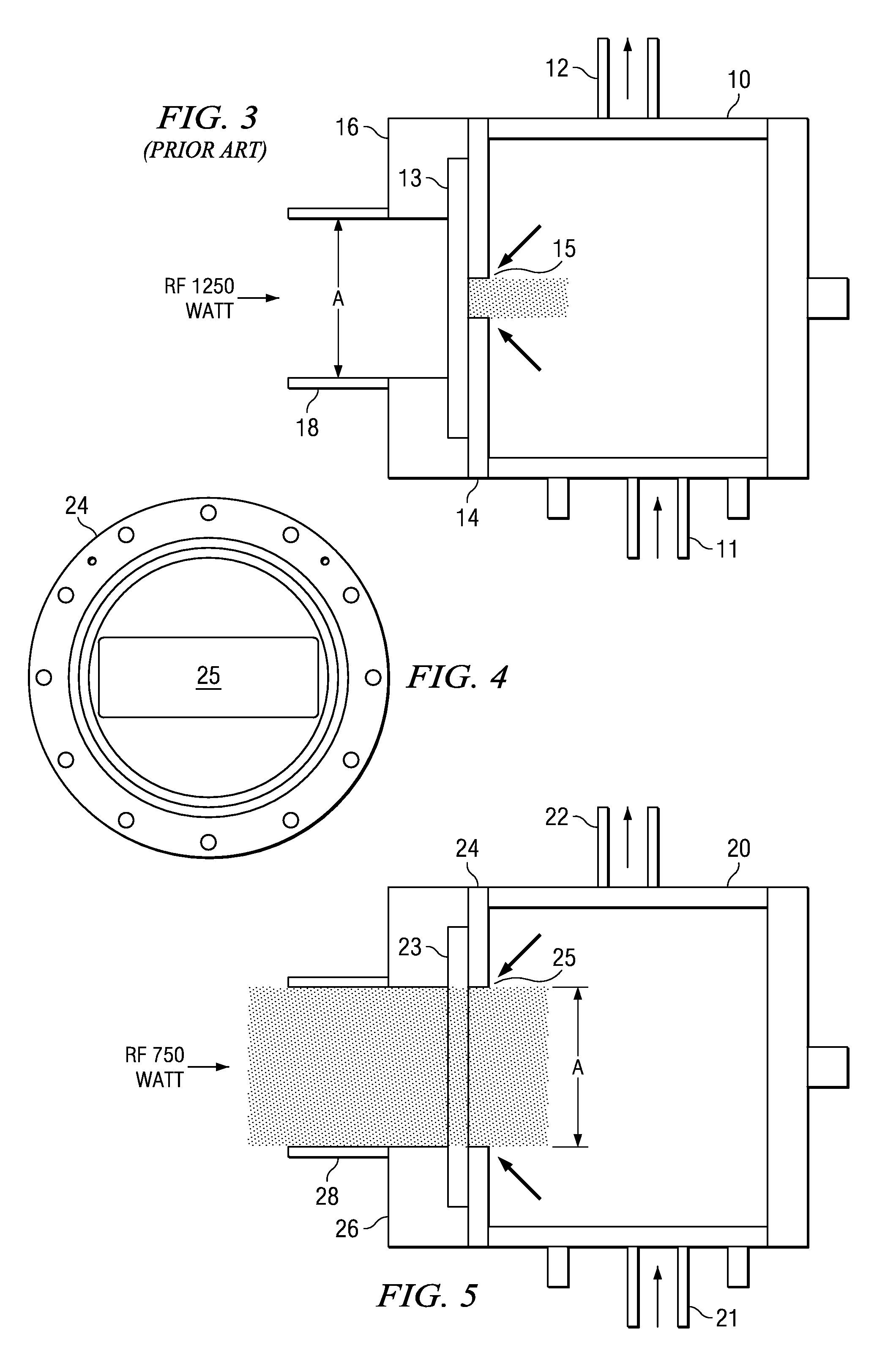Device for Coupling Electromagnetic Radiation from a Source into a Microwave Chamber
- Summary
- Abstract
- Description
- Claims
- Application Information
AI Technical Summary
Benefits of technology
Problems solved by technology
Method used
Image
Examples
Embodiment Construction
[0019]Referring now to FIG. 4 and FIG. 5, a microwave chamber (20) has an inlet pipe (21), which is connected to the chamber (20) in a bottom surface of the chamber (20) and is operable to allow gases to enter the chamber (20). An outlet pipe (22) is connected to the chamber (20) in a top surface of the chamber and is operable to allow gases to exit the chamber (20). The outlet pipe (22) is connected to a process chamber (not shown), in which semiconductor wafers are to be processed.
[0020]A window (23) is provided on a front face of the chamber 20. An outer aluminum plate (26) facing outwardly of the front face of the chamber (20) secures the window (23) to the front face of the chamber (20) and is operable to provide a vacuum seal so that the chamber (20) is airtight once it has been pumped down to a required pressure. The aluminum plate (26) defines an opening, which acts as a waveguide (26). The waveguide (26) has a cross-sectional area (29) and is operable to allow microwave rad...
PUM
| Property | Measurement | Unit |
|---|---|---|
| Thickness | aaaaa | aaaaa |
| Area | aaaaa | aaaaa |
| Electromagnetism | aaaaa | aaaaa |
Abstract
Description
Claims
Application Information
 Login to View More
Login to View More - R&D
- Intellectual Property
- Life Sciences
- Materials
- Tech Scout
- Unparalleled Data Quality
- Higher Quality Content
- 60% Fewer Hallucinations
Browse by: Latest US Patents, China's latest patents, Technical Efficacy Thesaurus, Application Domain, Technology Topic, Popular Technical Reports.
© 2025 PatSnap. All rights reserved.Legal|Privacy policy|Modern Slavery Act Transparency Statement|Sitemap|About US| Contact US: help@patsnap.com



